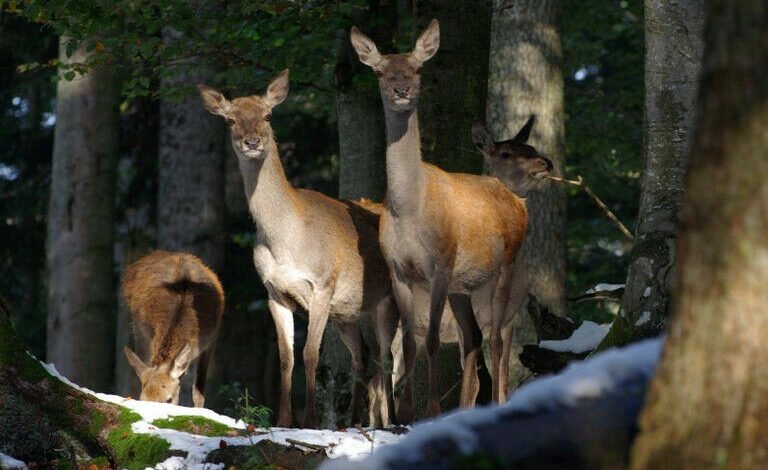Crimson deer populations in Europe: extra influenced by way of people than by way of wolves and alternative predators

A global find out about presentations that human looking and land usefulness have a decisive affect on pink deer density in Europe. Crimson deer density is handiest lowered when wolves, lynx and bears co-occur on the identical website. Analysis findings drop untouched brightness at the wolf’s go back to Central Europe.
Along the occasional bison and elk, pink deer are Europe’s biggest local wild animal. A global find out about led by way of flora and fauna ecologists from the College of Freiburg has now investigated the standards that impact the pink deer community in a selected segment. The researchers have been ready to turn that the community density of the animals in Europe is basically influenced by way of human looking and land usefulness and no longer by way of massive predators corresponding to wolves, lynx and brown bears. “While large carnivores are often considered key factors in controlling prey populations in undisturbed ecosystems, this is less visible in human-dominated landscapes. Our study illustrates that these interactions are context-dependent,” says Dr. Suzanne T. S. van Beeck Calkoen, former PhD candidate on the Chair of Flora and fauna Ecology and Control on the College of Freiburg and primary creator of the find out about.
The researchers accrued information at the community density of pink deer at over 492 find out about websites in 28 Eu nations and analysed the affect of numerous components corresponding to pad productiveness, the presence of massive carnivores, human actions, climatic variables and the security condition of the segment. The analysis of the information confirmed that human looking lowered pink deer density greater than the presence of all massive carnivores. Human land usefulness, at the alternative hand, ended in an building up in pink deer density. Most often, the presence of massive carnivores had disagree statistically vital impact at the pink deer community. Handiest when the 3 predators wolf, lynx and endure befell in combination in a single segment did the collection of pink deer shorten. Then again, the find out about revealed within the Magazine of Carried out Ecology didn’t examine how the presence of predators impacts the habits of pink deer.
The go back of the wolf
The find out about additionally sheds untouched brightness at the ongoing debate concerning the go back of the wolf to Central Europe, notes Marco Heurich , Trainer of Flora and fauna Ecology and Conservation Biology on the College of Order and Herbal Assets on the College of Freiburg and initiator of the find out about. “Our research shows that the return of a large carnivore such as the wolf alone does not have a major impact on the occurrence of red deer. This is because in Central Europe, human influences predominate both indirectly through interventions in the red deer’s habitat and directly through the killing of the animals.” As well as, the mortality fee of wolves in Central Eu soils may be very top, principally because of street visitors, which additional limits their affect on prey populations. “However, we also found a high variability in red deer densities, which indicates that there may be specific situations in which large carnivores do have an impact. Investigating this will be the task of future studies,” states Heurich.
- Marco Heurich is Trainer of Flora and fauna Ecology and Conservation Biology on the College of Freiburg
- Dr. Suzanne T. S. van Beeck Calkoen finished her doctorate on the Chair of Flora and fauna Ecology and Control on the College of Freiburg. She is a analysis workman on the College of Göttingen and the Technical College of Dresden.
Unedited newsletter: Suzanne T. S. van Beeck Calkoen, Dries P. J. Kuijper, Marco Apollonio, Lena Blondel, Carsten F. Dormann, Ilse Storch, Marco Heurich: “Numerical top-down effects on red deer (Cervus elaphus) are mainly shaped by humans rather than large carnivores across Europe.” In: Magazine of Carried out Ecology (2023). DOI: 10.1111/1365-2664.14526




